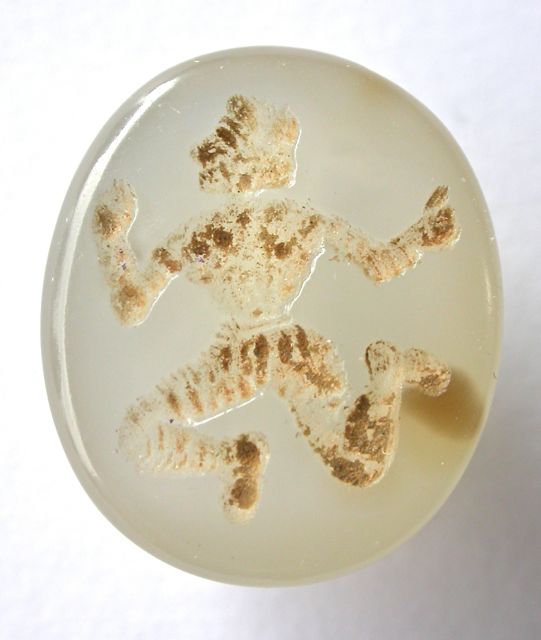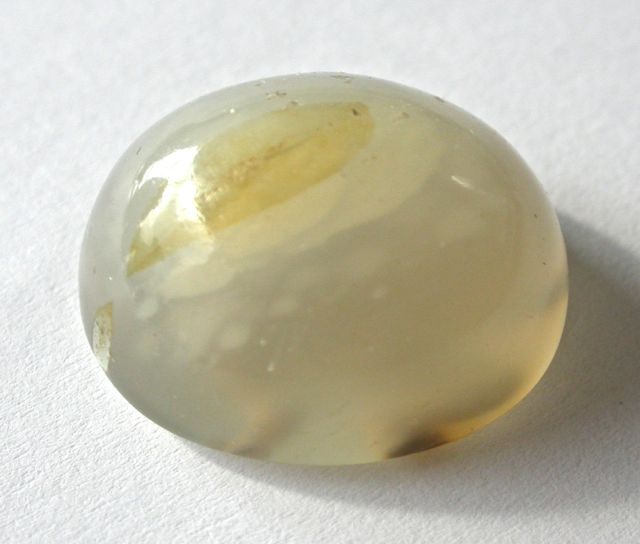| Angkor Borei, Oc Eo, Funan, and a seal intaglio of Hanuman, the monkey king | |||||
| Re: The beads from Angkor Borei -- Ten Chrai | Post Reply | Edit | Forum | Where am I? | |
08/13/2014, 13:14:42
Welcome to the BCN. I think you may be the only contributor here from Cambodia, and it's good to have a voice from a country with such a long and rich history. I have spent a lot of time there myself over the past fifty years, including several visits in recent times to the archaeological sites in and around Angkor Borei in southeastern Cambodia. Just last month I spent a few days very close to there at An Giang in southern Vietnam where there's a very nice little museum with a lot of interesting Funan-era finds some of which date back to the period of French colonial archaeology.
May I just start by saying that as far as this forum is concerned it would be better to post just a few objects at a time with photos that are clear and detailed enough for the rest of us to see the surfaces and perforations of the beads, etc. Otherwise we just get swamped with informational overkill. If you do that, anything that is genuine is likely to get dismissed or overlooked.
As it is, my own first impression is that this is a very mixed bag. Some of the beads, such as the recent copies of zi beads, are, as others have pointed out, clearly not ancient, nor did they have anything to do with Angkor Borei. You only undervalue the other items by including them. Some of the agates and carnelians look to be recent Chinese production, but quite a lot of them are possibly authentic. It's difficult to know without more detail.
The ear ornaments are, I think, genuinely from the first half of the first millennium CE, perhaps even earlier from the Sa Huynh culture in Vietnam.
The silver coins used to be thought (by for instance the French archaeologist Malleret who did a lot of work in the area in the 1930s) to date from the Funan period, but now most coin experts would date them a lot later.
The square "gold" appliqués look very doubtful to me because of their Buddhist iconography. Buddhism didn't really come to Funan in any substantial way until about 500, which is when the kingdom (or whatever you call it) was beginning to lose power in the region. Almost all of these gold squares that I've seen are of secular/Hinduized imagery, elephants, flowers etc. Are the ones that you show actually high-grade gold? That at least would be helpful as a starting point.
On the other hand, the gold rings that you posted several minutes ago look entirely authentic to me. I have no doubts at all about them and would like to see much better pictures.
Most of the rock crystal beads look okay to me, and rock crystal was a much appreciated commodity at Funan sites.
Finally, the intaglio seals: this technique comes originally from West Asia and became quite popular in Funan, probably as a result of the strong Roman influence there. None of them (to the best of my knowledge) is drilled with a hole for suspension, so it seems that they must have been intended to be set into rings, and yet, (again to the best of my knowledge) none has been found in a ring setting. It's impossible to be sure about the ones you show without more detail. The first one you posted - the oval seal of Vishnu - might be good, though it's an unusual shape. Others again I'm doubtful of, especially the light, bright green one. Just to give these the attention they might deserve might take a day or so, so please don't ask too much of us.
To show an image of my own, here's a very nice chalcedony seal that comes from just to the east of Angkor Borei, first to fifth century CE. I got it a long time ago. It's an image of Hanuman, the monkey king who's a great hero of the Ramayana and an especially popular figure even today in Thailand, Lao and Cambodia. The carving is unusually fine because it shows not just the outline of his body but also details of the fur covering it.
All the best,
Will


|